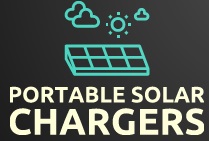Picture this: you’re about to embark on an exciting vacation, armed with all your tech gadgets ready for capturing memories and staying connected. As you pack your bags, you realize the crucial item missing from your arsenal – a portable charger. But, a question sparks in your mind – when you buy a portable charger, is it already charged? Before you set off on your adventure, let’s uncover the truth and find out if your portable charger is ready to power you up right out of the box.
1. What is a portable charger?
A portable charger, also known as a power bank, is a device that provides on-the-go charging capability for electronic devices such as smartphones, tablets, and portable gaming consoles. It serves as a convenient solution for situations where access to a power outlet may be limited or unavailable, allowing you to charge your devices anytime and anywhere.
1.1 Definition of a portable charger
A portable charger is a compact and portable device that contains one or more batteries and is capable of storing electrical energy. It is designed to be easily carried in a bag or pocket, making it ideal for travel, outdoor activities, and emergencies. The charger can be connected to a mobile device using a USB cable, supplying power to recharge the battery of the device.
1.2 Common features of portable chargers
Portable chargers come in various shapes, sizes, and capacities, but they typically share several common features. These features may include multiple USB ports for charging multiple devices simultaneously, LED indicators to display the remaining charge level, and built-in safety features to prevent overcharging and short circuits. Some portable chargers may also feature wireless charging capability or additional functionalities such as built-in flashlights.
2. Understanding the charging process
To fully grasp the concept of portable chargers, it is important to understand how they work, the different types of batteries they use, and the various charging methods and timeframes associated with them.
2.1 How do portable chargers work?
Portable chargers work by using their internal batteries to store and provide electrical energy to electronic devices. When you connect your device to a portable charger using a USB cable, the charger’s battery discharges its stored energy to charge the battery of the connected device. This process allows you to replenish the depleted battery of your device, providing you with extended usage time.
2.2 Types of portable charger batteries
Portable chargers primarily use two types of batteries: lithium-ion (Li-ion) and lithium-polymer (Li-Po) batteries. Li-ion batteries are the most common and are known for their high energy density, long cycle life, and relatively low cost. On the other hand, Li-Po batteries offer a higher energy density, making them more compact and lightweight, but they are often more expensive.
2.3 Charging methods and timeframes
The charging time of a portable charger depends on several factors, including the capacity of the charger’s battery and the charging method employed. Portable chargers can be charged using various methods such as USB charging from a power outlet, charging from a computer or laptop, or even solar charging. The time it takes for a portable charger to fully charge can range from a few hours to several hours, depending on the charging capacity and the charging method used.
3. The state of charge when buying a portable charger
When purchasing a portable charger, you may wonder about the battery charge level it comes with and how it can affect your immediate use of the device. Understanding the factors that influence the charge level of a portable charger upon purchase can help you make an informed decision.
3.1 Battery charge levels upon purchase
Portable chargers are typically shipped with varying levels of charge. Some may come partially charged, while others may come fully charged or completely discharged. The specific charge level can vary depending on the manufacturer and the model of the portable charger. It is essential to check the charge level before relying on the charger for immediate use.
3.2 Factors influencing the charge level
Several factors can influence the charge level of a portable charger when you purchase it. These include the manufacturing date of the charger, the storage conditions during transportation, and any quality control measures implemented by the manufacturer. It is important to consider these factors to better understand the initial charge level of your portable charger.
3.3 Manufacturer policies and practices
Different manufacturers may have varying policies and practices regarding the charge level of their portable chargers upon purchase. Some manufacturers may prioritize fully charging their products before shipping, ensuring immediate usability out of the box. Others may only partially charge the batteries to avoid potential safety hazards during transportation. Familiarizing yourself with the manufacturer’s policies and practices can help you manage your expectations when buying a portable charger.
4. Potential scenarios when purchasing a portable charger
When you purchase a portable charger, you may encounter different scenarios regarding its charge level. Understanding these scenarios can help you assess the immediate usability of the charger and plan accordingly.
4.1 Fully charged portable chargers
In some cases, you may receive a portable charger that is fully charged upon purchase. This means that you can immediately use the charger to power up your devices without the need for initial charging. This scenario is ideal if you require immediate power for your electronic devices, especially in emergency situations or while traveling.
4.2 Partially charged portable chargers
Another scenario is when you receive a portable charger that is partially charged. This means that the charge level of the battery is not fully depleted, but it may still require some additional charging before reaching its maximum capacity. In this situation, you can still use the charger, but it is recommended to charge it further to ensure optimal performance and longer usage time.
4.3 Completely discharged portable chargers
Some portable chargers may arrive completely discharged, meaning the battery has no remaining charge. In this case, the charger needs to be charged fully before it can be used. It is important to note that discharging a battery to a very low or completely discharged state for an extended period can potentially cause irreversible damage or reduce the battery’s overall lifespan.
4.4 Pre-charged portable chargers
Certain portable chargers are specifically marketed as pre-charged or pre-charged out of the box. These chargers typically come partially charged and can be used immediately upon purchase. While they may not have a full charge, they generally provide enough power to meet immediate charging needs. Pre-charged portable chargers can be a convenient option for those who require immediate power without the need for additional charging.
5. Importance of checking the charge level
Checking the charge level of a portable charger upon purchase is crucial for several reasons. By ensuring the charge level is suitable for your needs, you can enjoy immediate usability, prevent potential damage to your electronic devices, and maximize the battery lifespan of your portable charger.
5.1 Ensuring immediate usability
By checking the charge level, you can determine whether the portable charger is ready for immediate use or if it requires further charging. This allows you to plan accordingly, especially in situations where you need to rely on the charger immediately, such as during power outages or while on the go.
5.2 Preventing damage to electronic devices
Using a portable charger with a low or insufficient charge level can potentially lead to inadequate power supply to your electronic devices. This may result in incomplete or slow charging, reduced performance, or even damage to your devices. By checking the charge level and ensuring it is sufficient, you can protect your devices and maintain their optimal functionality.
5.3 Maximizing the battery lifespan
The lifespan of a portable charger’s battery can be influenced by various factors, including the depth of discharge and the frequency of charging cycles. By checking the charge level and avoiding prolonged periods of complete discharge, you can extend the battery’s lifespan and improve the overall performance of the portable charger.
6. Tips for checking the charge level
Checking the charge level of a portable charger can be done using various methods, depending on the available indicators and tools provided by the charger. Here are some tips to help you assess the charge level.
6.1 Using built-in indicators
Many portable chargers come with built-in LED indicators that display the remaining charge level. These indicators may use a color-coded system or a numerical display to provide information about the charge status. Consult the user manual or the manufacturer’s instructions to understand how to interpret the LED indicators and determine the charge level.
6.2 Utilizing device-specific software
Some portable chargers can be connected to a computer or a smartphone using specialized software or apps provided by the manufacturer. These software applications may provide detailed information about the charge level, battery health, and other relevant metrics. Check if your portable charger is compatible with any software or apps that can help you monitor the charge level more precisely.
6.3 Testing with a compatible device
Connecting a portable charger to a compatible electronic device can give you an estimate of the charge level. Certain devices, such as smartphones, may display the charging status when connected to a power source. Keep in mind that this method may not provide an exact measurement of the charge level but can give you a general idea if the charger has sufficient power.
6.4 Employing third-party battery testers
If you require a more precise measurement of the charge level, you can consider using third-party battery testers. These devices specialize in providing accurate readings of battery charge levels and can be used with various portable chargers. Ensure that the battery tester is compatible with the type of battery used in your portable charger and follow the manufacturer’s instructions for optimal results.
7. How to charge a newly purchased portable charger
If you receive a portable charger with a charge level that requires additional charging, there are several steps you can follow to charge it properly and ensure optimal performance.
7.1 Reading the manufacturer’s instructions
Before charging your portable charger, it is essential to read and understand the manufacturer’s instructions. Every portable charger can have specific requirements and recommendations for the charging process, including the type of charger to be used, the charging duration, and any safety precautions. Familiarize yourself with these instructions to avoid any potential mishaps during the charging process.
7.2 Choosing the appropriate charging method
Portable chargers can be charged using various methods, depending on the charger’s design and the options available. The most common methods include USB charging from a power outlet, charging from a computer or laptop, or solar charging. Refer to the manufacturer’s instructions to determine the optimal charging method for your specific portable charger.
7.3 Optimal charging duration
The charging duration for a portable charger can vary depending on factors such as the battery capacity, the charging method, and the current charge level. It is recommended to charge the portable charger until it reaches its full capacity as indicated by the manufacturer or the built-in indicators. Avoid leaving the charger connected to the power source for an extended period after it has reached full capacity to prevent overcharging.
7.4 Safety precautions
When charging a portable charger, it is important to observe certain safety precautions. These may include using the provided charging cable and adapter, ensuring proper ventilation during the charging process, and avoiding exposing the charger to extreme temperatures or moisture. Taking these precautions can help prevent potential safety hazards and ensure the longevity of both the charger and the connected devices.
8. Best practices for maintaining a portable charger’s charge
To optimize the charge level and prolong the lifespan of your portable charger, it is essential to follow some best practices for its maintenance.
8.1 Regularly monitoring the charge level
Make it a habit to regularly check the charge level of your portable charger, especially before any planned trips or extended periods without access to a power source. By staying aware of the charge level, you can ensure that the charger is always ready for use when you need it.
8.2 Proper storage techniques
When not in use, it is important to store your portable charger properly to maintain its charge. Avoid storing the charger in extreme temperatures, as high heat or cold can affect the battery’s performance. Additionally, ensure that the charger is stored in a dry and safe location to prevent any potential damage.
8.3 Avoiding extreme temperature conditions
High temperatures can cause the battery of a portable charger to degrade faster, while extremely low temperatures can affect the charger’s overall performance. Avoid leaving your charger exposed to direct sunlight or placing it near heat sources. Similarly, during freezing temperatures, consider keeping the charger in a warmer place to prevent damage.
8.4 Disconnecting after full charge
Once your portable charger has reached its full capacity, it is advisable to disconnect it from the power source. Overcharging can potentially reduce the battery’s lifespan or even pose safety risks. Disconnecting the charger after full charge helps ensure that the battery remains in good health and ready for use.
9. Additional considerations
In addition to understanding the charge level, there are a few other factors to consider when purchasing a portable charger to ensure a satisfactory experience.
9.1 Warranty information
Before purchasing a portable charger, it is recommended to review the warranty information provided by the manufacturer. A warranty can give you peace of mind by covering any potential defects or malfunctions of the charger. Familiarize yourself with the warranty duration, any applicable terms and conditions, and the process for claiming warranty services.
9.2 Reputable brands and customer reviews
When buying a portable charger, it is advisable to opt for reputable brands known for their quality and reliability. Reading customer reviews and ratings can also provide valuable insights into the performance and durability of a specific portable charger model. Consider choosing a charger that has positive reviews and a good track record in terms of customer satisfaction.
9.3 Assessing charging capabilities
Different portable chargers may have different charging capabilities, such as the number of devices that can be charged simultaneously or the output current provided by each USB port. Assess your specific needs and usage requirements to determine the suitable charging capabilities for your portable charger. This will ensure that the charger can accommodate your devices and provide optimal charging speed.
10. Conclusion
When purchasing a portable charger, it is essential to understand the various aspects related to the charge level, the charging process, and maintenance practices. By checking the charge level, ensuring immediate usability, and following the manufacturer’s instructions, you can optimize the performance and longevity of your portable charger. Additionally, considering warranty information, reputable brands, and the charging capabilities of the charger can help you make an informed choice and select a portable charger that best suits your needs. With a reliable portable charger at hand, you can enjoy uninterrupted power for your electronic devices anytime and anywhere.





